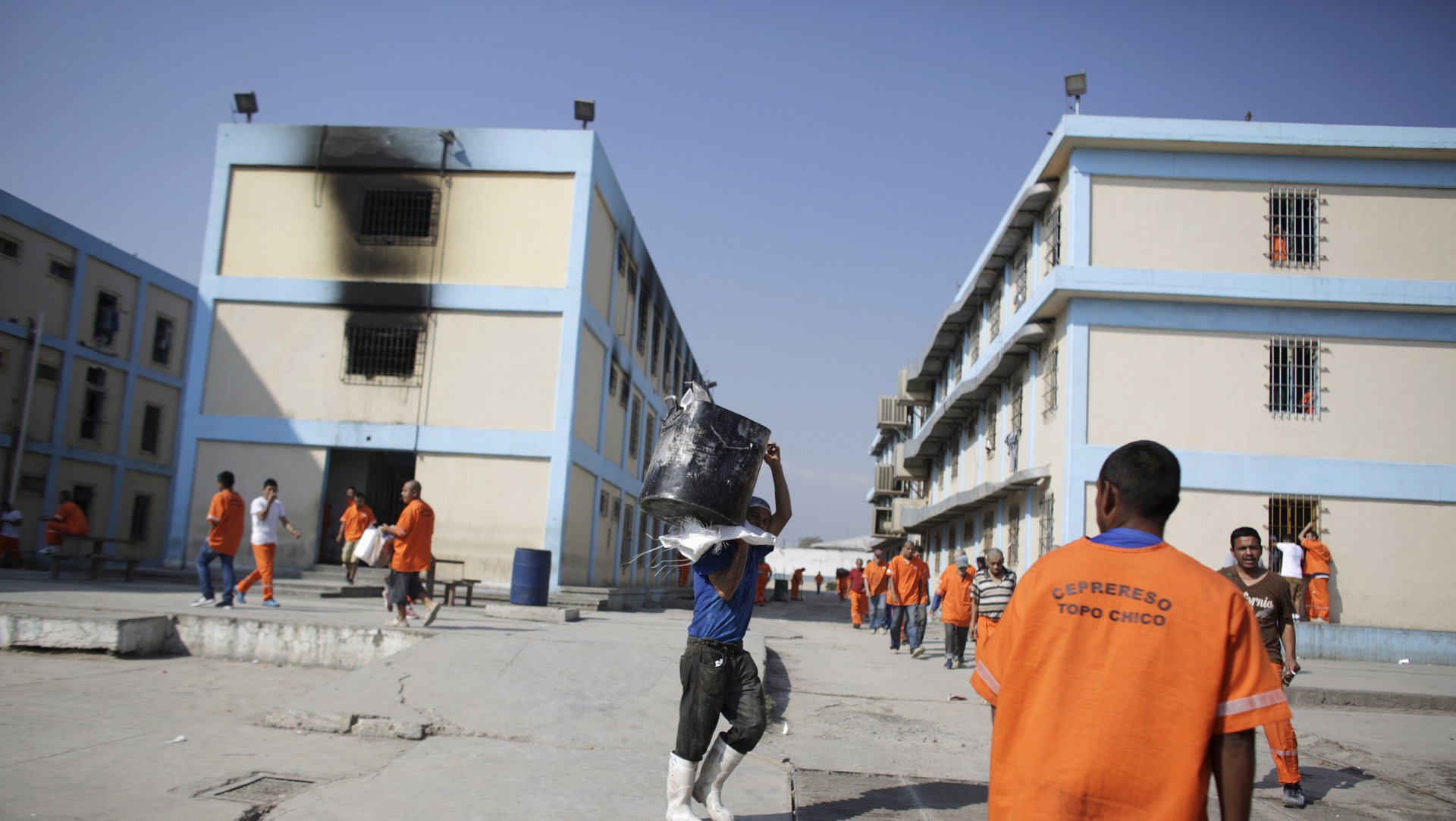In more than half of Mexico’s prisons, inmates have taken control
Aquariums, sauna baths, digital TVs and more than 280 food stands, including a bar. Those are some of the perks dismantled by authorities at Topo Chico prison in northern Mexico, the site of a bloody riot earlier this month that left 49 inmates dead.


Aquariums, sauna baths, digital TVs and more than 280 food stands, including a bar. Those are some of the perks dismantled by authorities at Topo Chico prison in northern Mexico, the site of a bloody riot earlier this month that left 49 inmates dead.
The pile of contraband (link in Spanish), which had to be removed with heavy machinery due to its bulk, is not a sign of progressive corrections policy. Instead, it underscores the fact that criminals were running the jail in Monterrey, in the state of Nuevo León. And that’s the situation in many of Mexico’s jails. Nearly 60% of state prisons are dominated by inmate self-rule (Spanish, pdf, pg. 418,) according to an evaluation of dozens of penitentiary centers by the National Human Rights Commission in 2014.
The agency found that inmate groups run many aspects of prison life, including family visits, the use of phones, and even what inmates are fed. The situation, it says in its report, leads to violence and power struggles. Despite repeated calls (Spanish) for public officials to do something about the growing problem, experts say conditions haven’t improved in recent years.
“There’s a criminal society inside the jails, with its organization and privileges, and in which everything has a price,” Daniel Montero Zendejas, a criminal law expert, tells Quartz.
Mexico’s drug cartel activity, and the insecurity and corruption it breeds, has led to an even more dangerous climate in its jails. As the government cracks down on organized crime—and all other types of unlawful activity—prison populations have swelled. As of December 2015, the country’s penitentiary system was holding nearly 40,000 more inmates (Spanish) than the roughly 200,000 it was built for, according to the latest statistics by the National Security Commission.
Some of this overcrowding is due to “preventive jailing”—essentially locking up people who are waiting to be sentenced in order to keep them from fleeing—says Elena Azaola, a researcher at the Center for the Investigation and Higher Education of Social Anthropology. Inmates in that situation make up more than 40% of prison populations, the latest data from the security commission show. “There are many innocent people who have still not been proven guilty,” she tells Quartz.
Meanwhile, the number of custodians has not kept up with the rising number of inmates, according to a government census of state jails.
So guards, who are generally not paid or trained particularly well, often resort to sharing power—and profits—with inmate leaders to keep the peace, Azaola says. That means a dangerous contraband economy thrives. Here are a few of the forbidden items (Spanish) seized last week at another Nuevo León state jail: 483 doses of dry herb presumed to be marijuana, 169 movies, 122 objects with a metal point, 56 hammers, 52 drill bits, 27 USBs, 12 cell phones and one saw.
Federal penitentiaries tend to keep tighter controls—though that didn’t prevent Joaquín “El Chapo” Guzmán, who was housed in Mexico’s highest security prison, from having an escape tunnel built. The drug cartel boss fled through it last July, and was re- captured in early January.